Performing Arts Highlights 2003-2004
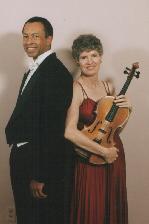 FMU
First
Tuesday Chamber Music Series
FMU
First
Tuesday Chamber Music SeriesTuesday, 2 September 2003
Kassab Hall, Hyman Fine Arts Center, 8:00 pm
ARCHIVED CONTENT - REDIRECT
|
 FMU
First
Tuesday Chamber Music Series
FMU
First
Tuesday Chamber Music SeriesStarr Ward is
co-principal violinist
with the Florence Symphony Orchestra and has been a soloist in the past
two seasons. She graduated from UNC-Greensboro with a
Bachelor of
Music and Master of Music in Music Education.
Sherry Woods,
viola, is
Principal Viola of the Florence Symphony and a member of the South
Carolina Philharmonic. She recently completed the DMA in
musical
composition from the University of South Carolina, where she completed
a DMA in viola in 1991. She maintains a studio of private
students in Florence.
Benjamin Woods
is professor of
music at Francis Marion University and the music director/conductor of
the Florence Symphony Orchestra. As pianist he performs solo
and
chamber recitals around the country, and he coordinates the monthly
First Tuesday Chamber Recital Series for the Department of Fine Arts
and Mass Communication.
Duo, K 423. . . . . . . . . . . . . . . . .W.A. Mozart
Allegro
Starr Ward, Sherry Woods
Sonata in G minor . . . . . . . . . . . . Henry Eccles
Largo
Corrente: Allegro
Sherry Woods, Benjamin Woods
Sarahbande. . . . . . . . . . . . . . . . Sherry Woods
Sherry Woods, Benjamin Woods
Mbira Piece . . . . . . . . . . . . . . . W.A. Mathieu
Self Confidence
Benjamin Woods
Polish Dance. . . . . . . . . . . . . . . . . . Severn
Starr Ward, Benjamin Woods
Suite . . . . . . . . . . . . . . . . . Ernest Bloch
1. Lento - Allegro - Largamente
Sherry Woods, Benjamin Woods
Nachtgesang . . . . . . . . . . . . . . . . .Max Bruch
Starr Ward, Sherry Woods, Benjamin Woods
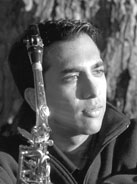 FMU
Artist Series Concert
FMU
Artist Series ConcertAshu Kejariwal has won numerous international and national competitions, and has performed extensively as concerto soloist and recitalist. He has performed in Carnegie Hall’s Weill Recital Hall as the winner of the 1997 National Alliance for Excellence Performing Arts Competition. At age 16, Kejariwal made his debut as concerto soloist with the United States Air Force Band in Washington D.C. after winning First Prize in the National Col. George S. Howard Young Artist Competition. Since then, his performances have taken him from Lanai, Hawaii to Trondheim, Norway.
Kejariwal has had exceptional success on the competition scene, winning first prizes in many prestigious contests. These include the International Heida Hermanns 2000 Young Artists Competition, the 2001 National Midland-Odessa Young Artist Competition, the Keweenaw Symphony Orchestra 2001 Concerto Competition, the Northwestern Symphony Orchestra 2000 Concerto Competition, the National Federation of Music Clubs 2001 Student Competition, and the 2000 Kingsville International Young Performers’ Wind Instrumentalist Competition. In addition he was the First Prize winner in the 2001 Skokie Valley Symphony Orchestra Concerto Competition, resulting in a concerto appearance with the orchestra.
Kejariwal has made it his goal to bring the concert saxophone to as wide an audience as possible. Recent concert engagements include performances of two premiers on the "Music for Awhile" Concert Series, the Frank Lloyd Wright’s Unity Temple Concert Series, and Chicago’s WFMT Dame Myra Hess Concert Series, which will be broadcast live on 500 radio stations throughout the country. Kejariwal has been invited to perform as concerto soloist with various ensembles throughout the country, including the Waco Symphony Orchestra, the Woodlands Symphony Orchestra, and the Corpus Christi Wind Symphony. He performed as soloist with the Richardson Symphony Orchestra after winning First Prize in the 1997 National Lennox Young Artist Concerto Competition.
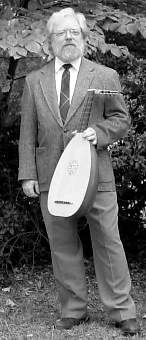 FMU
First Tuesday Chamber Music Series
FMU
First Tuesday Chamber Music SeriesE.
Allen
Johnson is a native of Columbia, SC, and has been involved in
music since an early age. While attending Columbia High School, he was
twice a member of the All State Chorus in the bass section and three
times in the Columbia All City Band as a clarinetist. He also taught
himself folk guitar and Appalachian Dulcimer.
At the University of South Carolina, he studied voice and clarinet, and
began to pay close attention to classical guitar players. He was a
member of the USC Concert Choir under the direction of Arpad Daraz, who
had been a student of Zoltan Kodaly in Hungary. This choir toured
Europe and took first place in the folk and contemporary categories in
the Bela Bartok International Choir Competition in Debrecen, Hungary in
1976. They also performed at the MENC convention in New Orleans in 1975
and the 1977 Spoleto Festival. Allen was also a member of the USC
Collegium Musicum, which was an ensemble devoted to the performance of
"early music," primarily of the Renaissance and Medieval periods. He
played recorders, crumhorn, cornamuse, rackett, shawm and cornetto with
this group, and was associated with lute, viol and guitar players. He
received his Bachelor of Music degree in Music History in 1977.
Since coming to Florence in 1983 to open a branch of Parker Music Co.,
Allen has been very involved in the local music scene, performing in
the Little Theater pit orchestra, accompanying the Master Works Choir,
numerous school and civic events, Madrigal dinners at South Florence
High and Coker College, and playing many weddings. He has served as a
adjunct professor at Coker College, and has played violin in the
Florence Symphony Orchestra for a number of years. He is a past board
member of the Florence Area Arts Alliance, and presented a lecture to
the Pee Dee Heritage Center on Music In the Pee Dee, which was
sponsored by FMU, Coker College, Coastal Carolina and the Governor's
School.
Allen taught the strings program at Wilson High and Williams Middle
School for the past three years, but has now decided to concentrate on
private lessons and performing.
On Lute
Pack's Pound. . . . . . . . . . . . . . . . . Anon. 16th Century
A Galliard. . . . . . . . . . . . . . . . . Thomas Robinson 1603
Gavotte En Rondeau. . . . . . . . . . . . . J. S. Bach 1685-1750
From The Lute Suite #3 In G Minor
On Guitar
Kemp's Jig. . . . . . . . . . . . . . . . . . Anon. 16th Century
Eye Hath Not Seen . . . . . . . . . . Orlando Di Lasso 1530-1594
Pavannas Y Folias . . . . . . . . . . . . .Gaspar Sanz 1640-1710
Minuet. . . . . . . . . . . . . . . . . .Henry Purcell 1659-1695
Sarabande And Double. . . . . . . . . . . . J. S. Bach 1685-1750
From The Partita #1 For Solo Violin
Andante And Andantino . . . . . . . . Fernando Carulli 1770-1841
Cadence And Allegro . . . . . . . . . . Mauro Giuliani 1781-1829
Two Minuets . . . . . . . . . . . . . . . Fernando Sor 1778-1839
Allegro
Andantino
Leccion In A Minor. . . . . . . . . . . . Fernando Sor 1778-1839
Study In D. . . . . . . . . . . . . . . . Fernando Sor 1778-1839
Study In A Minor. . . . . . . . . . . .Matteo Carcassi 1792-1853
Lagrima . . . . . . . . . . . . . . .Francisco Tarrega 1854-1909
El Testamen De N'amelia . . . . . . . . .Miguel Llobet 1875-1938
With Guest Flautist Laura Greenway
Siciliana . . . . . . . . . . . . . . . . . J. S. Bach 1685-1750
From Sonata #2 For Flute
Gavotte . . . . . . . . . . . . . . . . . G. F. Handel 1685-1759
From Sonata For Flute In C Major
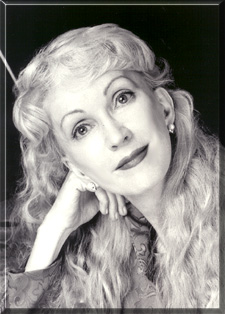 Burns
Memorial Recital
Burns
Memorial RecitalInternationally
acclaimed pianist
Teresa Walters will present her Keynote Comments® format solo piano
recital titled Music
of
Comfort
and Joy: Stories and Themes of Great Concertos.
Audiences
in South America, Canada, as well as in the U.S. are
responding to it with overwhelming enthusiasm.
Concerto
No. 2 in C minor. Op. 18.................Rachmaninoff
Moderate: Allegro
Adagio sostenuto
Allegro Scherzando
Concerto No. 1 in B-Flat
Minor, Op. 23...........Tchaikovsky
Allegro non troppo e
molto maestoso
Andantino simplice
Allegro con fuoco
Teresa Walters is very comfortable speaking to her audiences. She developed her Keynote Comments® several years ago in response to the need to more fully share her music in certain settings. In appropriate college, community, and lecture settings, Teresa shares enlightening information about the music before performing various selections on the recital program. Her comments are insightful and often entertaining. These programs have become quite popular with all kinds of audiences, from the musically sophisticated to those audiences hearing the music for the first time.
Teresa Walters is widely considered to be one of the world’s most uniquely gifted virtuoso pianists. Her concerts this season are part of an intense international schedule that includes performances throughout North and South America, Europe, and Asia. Recent highlights include performances with the Romanian Brasov Philharmonic in celebration of their 125th Anniversary, a South American debut in Sao Paolo, sponsored by Brazil’s Serie International De Concertos in honor of International Women’s Day, and an invitation to perform with the Bombay Orchestra at India’s new National Center for the Performing Arts. Under sponsorship of the Liszt-Kodaly Society of Spain, she was invited to perform the inaugural recital of the International Liszt Cycle Concert Series in Zaragoza. In her solo recitals and appearances as guest artist with symphony orchestras, Teresa Walters is a musical ambassador at home and abroad.
In
recent seasons, Teresa
Walters has performed as recitalist and
orchestral soloist on six continents and in most of the 50 United
States. Her biography could be written from headlines alone:
“Teresa
Walters Plays Piano on Grand Scale” (The Cincinnati
Inquirer);
“Her Hands Create Cascades of Luminescence” (The
Washington Post);
“Concert Simfonic Extraordinaire” (Bucharest
Stagiunea); “Bright
Shining Star in Recital” (El Norte, Mexico).
Teresa Walters’ recent performance at Lincoln Center in New
York earned
a standing ovation from a capacity crowd. A veteran of the
world’s
greatest concert stages, she has performed in New York’s
Carnegie Hall,
Wigmore Hall in London, the Salle Cortot in Paris, and the Great Hall
of Moscow. Her
international tours in recent seasons have included Austria, Hungary,
Switzerland,
Australia, Japan and Israel where the Jerusalem Post described her
artistry
as “Marvelous! As close to perfect as I hope to
hear.”
Teresa Walters recently became the first American pianist invited to
perform three prestigious European recitals honoring the Anniversary of
composer Franz Liszt’s birthday. In addition to recitals at
the Liszt
Academy of Music and Memorial Museum in Budapest, she performed at
Esterhazy Palace in Austria under the patronage of the present
governing Prince Anton Esterhazy. Her recital at the composer's
birthplace in Raiding was televised by Austrian National Television who
described Teresa Walters as "one of the world's most significant
pianists."
Teresa Walters is recording a series of releases featuring the sacred
piano music of Franz Liszt. The latest CD in the series has recently
been released and has received a nomination for the Grand
Prix du
Disque. Her new CD, hailed by FANFARE
magazine as "a
formidable display of technical dexterity and red-blooded-power",
includes selections from Liszt's Harmonies Poetiques et
Religieuses
as well as his Ave Maria d'Arcadelt, Alleluia,
and
Sonata in B Minor. In a recent review of her new CD, the
Budapest Sun wrote: "Teresa Walters takes the keyboard into
orbit."
The American Record Guide has announced "her competition is virtually
nil". Describing her virtuosity, The New York Times
wrote:
"There was much to admire: The crashing octave runs were all right on
the mark. Not a note was smudged in the pages of intricate passagework
and her conception had all the requisite sweep, power, and warm
sonority." New York Concert Review reported: "This
highly
gifted Lisztian takes the music farther technically and spiritually.
Her transcendental performance magically transforms the keyboard. She
has a huge, rolling sound and makes music like an eagle surveying the
landscape."
Additional
Information, visit
her
website at www.teresawalters.com.
David Marshall Burns, Jr., and Catherine
Koger Burns, natives of Charleston, South Carolina, were married and
moved to Florence in 1933 where they became actively involved in civic
activities and the arts. The Bums Recital Series was established in
1989 by Catherine Burns in memory of her husband and, upon her death in
1995, the Series was renamed the David Marshall and Catherine Koger
Burns Memorial Recital Series.
Mr.
Burns was a graduate of the Medical University School
of Pharmacy, with a post-graduate degree in pharmaceutical chemistry.
Mr. Burns was chief pharmacist at Roper Hospital in Charleston until
1933 when he became Medical Service Representative for Eli Lilly and
Company, Pharmaceutical Manufacturers, and moved to Florence.
He
was a member of the South Carolina Pharmaceutical
Association as well as the Travelling Men's Organization. He served on
the Board of Health of Florence and was Chairman of the Salvation Army
Board. He was a member of the Board of Stewards of Central Methodist
Church. He was volunteer instructor of pharmacology at McLeod's Nursing
School and was twice chosen by the nurses as outstanding teacher.
Mr.
Burns was a member of the Society for Preservation and
Encouragement of Barbershop Singing in America, Inc., an organization
dedicated to the support of a hospital in Kansas which treats children
with speech and hearing defects.
He
was a member of The Graduates, a Quartet which
performed at various affairs including Art's Alive at Francis Marion
University. He was honored by the local chapter in 1973 and again in
1984 when he was chosen Barbershopper of the Year. His hobby was
antique clock collecting and repair. His collection of about 250 clocks
went to a museum in North Carolina. After his retirement from Eli
Lilly, Mr. Bums worked part-time at Dixon's Drug Store on Dargan Street.
Catherine
Koger Bums was a graduate of Memminger High
School in Charleston and later earned degrees in Music and English at
Coker College in Hartsville. A talented actress, she later took post
graduate work at the University of North Carolina and studied drama at
the Bennett School, Millbrook, New York. After a brief attempt to make
a New York career in the theater, Mrs. Bums returned to South Carolina
and taught piano in Midland, South Carolina, under the supervision of
her cousin, Nell Mellichamp. Soon thereafter in 1933, she was married
to David Marshall Burns of Charleston.
In
Florence, Mrs. Burns continued to perform as a regular
with the Florence Little Theatre and played several leading roles in
radio dramas produced by WIS, Columbia, and WCSC, Charleston. As a
frequent reader at her Sorosis Literary Club, Mrs. Burns became
regionally recognized as an interpreter of the poetry of Dubose
Heywood, Harvey Alien, and others. For many years Mrs. Burns performed
dramatic readings and narrations at Christmas and Easter Holidays at
Central United Methodist Church and Timrod Park. Probably, however, the
most satisfaction she ever derived from the use of her talents was when
she was "The Story Lady" and read classic stories to the children at
the Florence Public Library. This cherished activity was resumed in her
adopted hometown of Tallahassee, Florida, where she lived until her
death in March 1995. This recital series is a tribute to David and
Catherine Burns and their valuable contributions to the enhancement of
the arts in the Pee Dee.
 FMU Artist
Series Concert
FMU Artist
Series ConcertProgram - The Music of Brazil
Two Pieces. . . . . . . . . . . . . . . . . . . . . . Ernesto Nazareth
Odeon (1863-1934)
Brejeiro
Three Pieces. . . . . . . . . . . . . . . . . . Alfredo da Rocha Viana
Lamentos (Pixinguinha)
Carinhoso (1898-1973)
Ainda Me Recordo
Four Pieces . . . . . . . . . . . . . . . . . . . . . .João Pernambuco
Mimoso (1883-1947)
Vals em La
Rosa Carioca
Interrogando
Intermission
Three Pieces. . . . . . . . . . . . . . . . . . . . . . . . Luiz Bonfá
Samba de Orfeo (1922-2001)
Mar Encantado
Luzes do Rio
Four Pieces . . . . . . . . . . . . . . . . . . . Antonio Carlos Jobim
Triste (1927-1994)
Por Causa de Você
Modinha
Samba do Avião
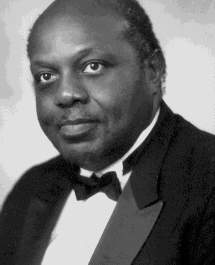 FMU
First
Tuesday Chamber Music Series
FMU
First
Tuesday Chamber Music Series
PROGRAM
Aufenthalt. . . . . . . . . . . . . . . . . . . .Schubert/Liszt
Fantasie in C Major, Op.15 ("Wanderer") . . . . .Franz Schubert
(1797 - 1828)
Sonata Op.1 . . . . . . . . . . . . . . . . . . . . .Alban Berg
(1885 - 1935)
Benediction de Dieu dans la solitude. . . . . . . . Franz Liszt
(1811 - 1886)
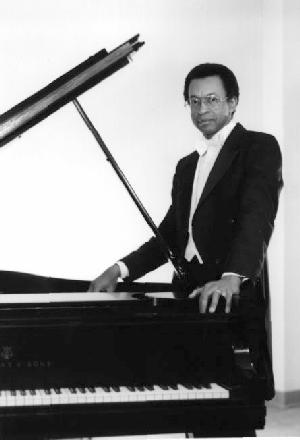 FMU
First Tuesday Chamber Music Series
FMU
First Tuesday Chamber Music Series
BENJAMIN WOODS has given numerous solo piano concerts across the country, including Coolidge Auditorium of the Library of Congress, and Carnegie Recital Hall in New York City where he made his début in 1985. As pianist, he has presented many faculty recitals at Francis Marion University, chamber music and solo concerts at numerous other colleges and universities, and performances at community concert series and festivals. He has performed as guest soloist with the Florence Symphony Orchestra, Florence SC, in concertos of Brahms, Beethoven, Tchaikovsky, Dohnanyi and Gershwin. He has performed the Beethoven Choral Fantasy with the Florence Masterworks Chorus and Orchestra. He has performed Beethoven concertos nos. 3, 4, and 5 with conductor John Paul and members of the Mississippi Symphony Orchestra, Jackson Mississippi. With the South Carolina Philharmonic, he has performed the Mozart Piano Concerto no. 23. He was selected one of twelve national finalists in the U.S. Information Agency's Artistic Ambassador Competition, and one of ten finalists in the Beethoven International Piano Competition.
Besides performing in the Woods Family Ensemble with his wife Sherry Woods, violist, and their children Christopher Woods, violinist, and Adrienne Woods, cellist, he has collaborated in recital with the Firenze String Quartet, and with artists Sue Butler Mills, soprano, Roland LeRoy Skinner, bassoonist, and, William Mills, pianist. He has also given concerts with Kathleen Vandekieft, Metropolitan Opera soprano finalist, Harold Jones, concert flutist, and Steve Maxym, principal bassoonist with the Metropolitan Opera Orchestra.
Benjamin Woods has conducted concerts of the Francis Marion College Chorus, the Florence Choral Society, and the Florence Masterworks Choir and Orchestra. Having served as Music Director/Conductor of the Florence Symphony Orchestra from 1996 to 2002, he recently retired from this post to devote all his energies to piano performance. Besides great symphonic literature, he has conducted the Florence Symphony in concertos and vocal works with artists such as Robert Jesselson and Kenneth Law, cellists, David Kim, violinist, Kathleen Vandekieft and Sue Orr, sopranos, Michael Best, tenor, Walter Hautzig, Raymond Dudley, Dana Dixon, and Michael Kim, pianists, and the Eroica Trio.
Presently a professor of music at Francis Marion University in Florence, SC, Benjamin Woods has recently received the distinction of being named one of Francis Marion University's Board of Trustees' Research Scholars. This designation recognizes his outstanding scholarly achievements in music performance, and the promise of continued scholarly activity in the future. He earned the BS degree in performance and education as a scholarship student from Lamar University in Beaumont, Texas. As a Graduate Fellowship recipient, he received the Master of Music degree in performance from Midwestern University in Wichita Falls, Texas. He received the Doctor of Musical Arts degree from the University of South Carolina, studying with Raymond Dudley, Artist-in-Residence. His other teachers and coaches include such outstanding musicians as Melissa Bayard, Verlie Mitchell, Martha Craft, Hubert Kaszynski, Ivy Boland, and concert pianists Eugene List, Beveridge Webster and Walter Hautzig.
PROGRAM
Preludes, Op. 32. . . . . . . . .Sergei Rachmaninoff
1. C Minor Allegro vivace
2. B flat Minor Allegretto
3. E Major Allegro vivace
4. E Minor Allegro con brio
5. G Major Moderato
6. F Minor Allegro appassionato
7. F Major Moderato
8. A Minor Vivo
9. A Major Allegro moderato
10. B Minor Lento
11. B Major Allegretto
12. G sharp Minor Allegro
13. D flat Major Grave
Universal
Lighting
-
Shakespeare's actors could see their audience; SSE actors can see you.
When an actor can see an audience, actors can engage with an audience.
And an audience can play the roles that Shakespeare wrote for
them-Cleopatra's court, Henry V's army, or simply the butt of
innumerable jokes. Leaving an audience in the dark can literally
obscure a vital part of the drama as Shakespeare designed it.
Doubling
-
Shakespeare's Macbeth has more than forty parts;
Shakespeare's
traveling company may have had fewer than fifteen actors. With a
company of ten to twelve actors, the SSE doubles parts, with one actor
playing as many as seven roles in a single show. Watching actors
play more than one role, an audience can experience another aspect
of Elizabethan playgoing: the delight of watching a favorite actor
assume multiple roles.
Gender
-
Because women didn't take to the English stage until after the
Restoration (1660), all the women in Shakespeare's plays were
originally
played by men or young boys. Shakespeare had a great deal of fun
with this convention. In a production of As You Like It
in
1600, a boy would have played Rosalind, who disguises herself as
a boy then pretends to be a woman. Let's review: that's a boy playing
a woman disguised as a boy pretending to be a woman. Because the
SSE is committed to the idea that Shakespeare is about everyone-male
and female-the SSE is not an all-male company, but we try to re-create
some of the fun of gender confusions by casting women as men and men as
women.
Length
-
We cannot know the precise running time of a Shakespeare play in the
Renaissance, but the Chorus in Romeo and Juliet
promises
"two hours' traffic of our stage." The Express tries to fulfill this
promise through brisk pacing, no intermission, and a
continuous flow of dramatic action.
Sets
-
Shakespeare's company performed on a large wooden platform unadorned by
fixed sets or scenery. A few large pieces-thrones, tombs, tables-were
occasionally used to ornament a scene. The SSE will sometimes use boxes
or set pieces to indicate location or provide a changing area; unlike
Shakespeare, we often have no backstage, but, like Shakespeare, we rely
on the audience's imagination to piece out our imperfections.
Costumes
-
Renaissance costumes were evidently sumptuous. They were also evidently
contemporary. In other words, Julius Caesar was not performed in togas.
Following this precedent, SSE actors wear modern clothing with elements
designed to distinguish character, rank, and role.
Music
-
Shakespeare had a soundtrack. Above the stage, musicians played an
assortment of string, wind, and percussion instruments before, during,
and after the play. The plays are sprinkled with songs for which lyrics
but not much of the music survive. The SSE sets many of these songs in
contemporary style. The result is emblematic of the SSE approach: a
commitment to Shakespeare's text and to the mission
of connecting that text to modern audiences.
More
about
the Shenandoah
Shakespeare
Express.
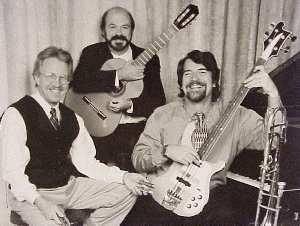 FMU Artist
Series Concert
FMU Artist
Series Concert
Dr. Sherry Woods, principal violist with the Florence Symphony, member of the South Carolina Philharmonic, the Firenze Quartet, and the Woods Piano Quartet, is well known as a performer, composer and educator. She and Benjamin Woods have been chosen several times as performing artists for the South Carolina Arts Commission's Community Tour Program. Sherry Woods earned the Doctor of Musical Arts Degree in viola performance at USC in 1991 and the DMA in Composition in December of 1997. She has taught at both Francis Marion University and the University of South Carolina.
Sherry Woods' works have been performed by artists such as Christopher Woods violinist, Elizabeth Johnson, flutist, Sue Orr, Marcy Betzer, and Sharyn Mapes, sopranos, the Vienna Saxophone Quartet, and William Mills, Nicholas Smith and Benjamin Woods, conductors. Larger groups performing her works have included the Florence Symphony, the South Carolina Philharmonic, and the Masterworks Choir and Orchestra. In recitals and in concerts from New York City to Taiwan her works have included the song cycle Leaves of the Fall, Persephone Dances for cello and orchestra, The Sunflower Concerto for violin and orchestra, Dance of the Dolphin and the Whale for youth orchestra, Sapphic Songs for women's chorus, Lament for Lost Infants for saxophone quartet, a dance suite, Kaleidoscope, choreographed and performed by the South Carolina Dance Company, The Florentine Overture, commissioned by the Florence Symphony for the opening of its 50th season, The Wisdom Fanfare, commissioned by the South Carolina Philharmonic and a choral work, The Holy Band - Mystical Songs on the Poetry of Hafiz, commissioned by the Masterworks Chorus and Orchestra.
Sherry Woods song cycle, Of Rivers and Trees, for tenor, piano, violin, viola, cello and flute, was premiered at the College of Charleston in November of 2001; it was described as "beautiful and riveting" by the Charleston Post. Collaborating with visual Artist Dagmar Nickerson for a joint presentation of art and music for the March 2003 First Tuesday Music Series at FMU, Dr. Woods presented From the Center, a recital of recent and new works.
She has served as composer in residence twice for Southside Middle school in Florence, and she composed compositions for both their Ron McNair and Dizzie Gilespie concerts. She served as conductor-clinician for the Florence All-City Orchestra, for which she was also commissioned to write a composition honoring retiring band director Leon Harvey.
Sherry Woods continues to compose, teach violin and viola, and perform solo literature, with orchestras, and with chamber music groups.
Peter Fichte has played in several orchestras, bands, and chamber music groups. His orchestral experiences include the New Rochelle (NY) Symphony, the Vermont Philharmonic Orchestra, the Portland (ME) Symphony Orchestra, and the Danbury (CT) Symphony Orchestra. He has been principal clarinetist for the Florence (SC) Symphony Orchestra for almost 15 years. His band experiences include the Westchester Pops Band (NY), the Burlington Vermont Town Band, and Chandler's Military Band (ME). His chamber music performances have been primarily in woodwind ensembles, such as the Maine Woodwind Chamber Players (1970-1983), and more recently the Florence Symphony Woodwind Ensemble. He has, on occasion, also taken part in clarinet-string and clarinet-piano chamber music performances. While he takes his music seriously, the profession in which he pursues his livelihood is as a faculty member at Coker College, in Hartsville, SC where he teaches chemistry and physics. He obtained his bachelor of arts degree in chemistry from New York University, and his doctoral degree in Physical Chemistry from The University of Vermont. He was a faculty member of Nasson College (Springvale, Maine) for fifteen years prior to his coming to South Carolina, and has been at Coker College since 1984. He finds that the intellectual challenges of science, and the emotional aspects of music help him search for balance in his life.
Benjamin Woods has taught music at FMU for nearly thirty-two years. He has performed on piano at various venues including Carnegie Recital Hall and the Library of congress. Besides conducting the Florence Symphony Orchestra, he has performed with symphony orchestras and in recital across the country. He has been awarded the Jack Baker Arts Achievement award and has been appointed n FMU Board of Trustees Research Scholar.
PROGRAM
Rumanische Melodie, Op. 83, no 5. . . . . . . . . .Max Bruch
Nachtgesang. . . . . . . . . . . . . . . . . . . . Max Bruch
Sherry Woods † Peter Fichte † Benjamin Woods
C-Scape. . . . . . . . . . . . . . . . . . . . .Sherry Woods
Benjamin Woods
A Midsummer Night’s Dream Waltz. . . . . . . . .Sherry Woods
Peter Fichte † Sherry Woods
Reflects dan l’eau. . . . . . . . . . . . .Claude A. Debussy
L’isle joyeuse . . . . . . . . . . . . . . Claude A. Debussy
Trio in E-flat Major K498 “Kegelstatt”. . .Wolfgang A. Mozart
Andante
Menuetto
Allegretto
Sherry Woods † Peter Fichte † Benjamin Woods